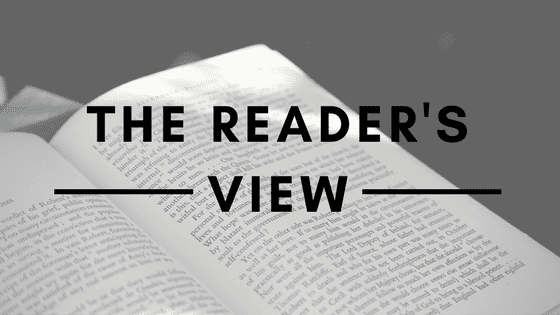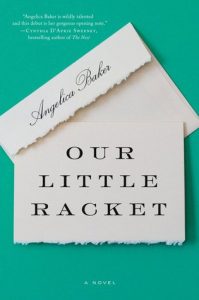 In Angelica Baker’s Our Little Racket, a prestigious NYC financial firm is on the brink of collapse, and its CEO, Bob D’Amico, faces professional and social disgrace. Wall Street is in chaos but, squired away in fabulously wealthy Greenwich, Connecticut, the families of Wall Street brokers are left in confused stasis.
In Angelica Baker’s Our Little Racket, a prestigious NYC financial firm is on the brink of collapse, and its CEO, Bob D’Amico, faces professional and social disgrace. Wall Street is in chaos but, squired away in fabulously wealthy Greenwich, Connecticut, the families of Wall Street brokers are left in confused stasis.
Told from the perspectives of five women whose lives intersect with Bob D’Amico’s, Our Little Racket explores the slow, festering panic that pervades the D’Amico household – and the entire community – in the wake of the financial crisis.
 Each of Baker’s five narrators is deeply isolated, struggling to understand the financial crisis and to navigate their increasingly complex relationships with each other. Isabel D’Amico, Bob’s shrewd and statuesque wife, faces the crisis with cold calculation, while her friend Mina flutters about her, anxious to crack her stoic veneer. The D’Amicos’ teenage daughter, Madison, mirrors her mother’s stoicism until the need for information overwhelms her, all the while shutting out her childhood best friend, Amanda. Between these warring, elite women weaves Lilly, the D’Amicos’ nanny, who is privy to the family’s most intimate moods, and yet is fundamentally an outsider.
Each of Baker’s five narrators is deeply isolated, struggling to understand the financial crisis and to navigate their increasingly complex relationships with each other. Isabel D’Amico, Bob’s shrewd and statuesque wife, faces the crisis with cold calculation, while her friend Mina flutters about her, anxious to crack her stoic veneer. The D’Amicos’ teenage daughter, Madison, mirrors her mother’s stoicism until the need for information overwhelms her, all the while shutting out her childhood best friend, Amanda. Between these warring, elite women weaves Lilly, the D’Amicos’ nanny, who is privy to the family’s most intimate moods, and yet is fundamentally an outsider.
With Bob conspicuously absent, Baker’s narrators are marooned in Connecticut, surrounded by the lavish trappings of a life that they fear may collapse. As a result, every interaction is suffused with their efforts to secure others’ information while revealing none of their own. Baker highlights each narrator in turn, revealing her precise social calibrations to the reader. In one such moment, Madison finds herself in front of a mirror with a powerful classmate, Zoë, who has been probing her for information about her family:
“They turned together to the mirror and stood side by side, their hips touching, their lipstick the same. Madison tilted her head toward Zoë’s. Zoë might not know it, but Madison was doing her a favor. She was allowing it, all the little comments, bending her head in gracious indifference.”
Madison is in a precarious situation, aware that Zoë is evaluating her for weakness, yet knowing that she would be dangerous to offend. In response, Madison arranges herself as the perfect copy, physically mirroring Zoë down to their lipstick, identical except for the slight head tilt that indicates Madison’s deference. She projects alliance with Zoë, but she also shrewdly assess her, chronicling transgressions, aware that she has a resource that Zoë craves: information about the crisis.
In focusing on these five women’s voices, Baker reveals a world that is deeply sex-segregated, where powerful men horde knowledge and wield their presence in the domestic sphere like a weapon, disappearing and reappearing at will. Women operate in an entirely different space, both physically and socially, presenting each other with precisely calibrated exteriors while, internally, they each struggle with crippling anxiety. When the structure of this affluent world breaks down, each of Baker’s five narrators asserts her own voice, weaving together a narrative of female resilience in the face of overwhelming uncertainty.




